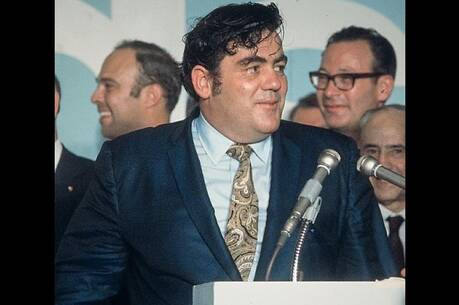Battle Across the Atlantic
A century and a half has passed since Confederate forces under General Pierre Gustave Toutant Beauregard opened fire on federal forces commanded by Major Robert Anderson at Fort Sumter in Charleston Harbor, S. C. Since that time, the Civil War has captured the attention and imagination of a nation. Over 50,000 books have been written about the war, a testament to the fact that there is no one easy way to explain a war that took the lives of over 600,000 men and permanently crippled hundreds of thousands more. Despite the prominence of the Civil War in historical memory, Amanda Foreman proves in her new book A World on Fire that lingering questions and interesting subplots remain uncovered.
One lingering “what if” that follows any discussion of the Civil War revolves around the relationship between Great Britain and the South. During the antebellum period, the cotton trade between the southern states and England proved highly profitable for both nations as American cotton fed the bourgeoning textile mills across the Atlantic. With the outbreak of war in 1861 and the federal implementation of the Anaconda Plan—which called for a blockade of southern ports—it was widely believed throughout the Confederacy that England would eventually be forced to enter the conflict on the side of the rebelling states in order to secure Southern cotton and avert financial disaster at home.
In the summer of 1862, as Robert E. Lee and the Army of Northern Virginia secured stunning victories against overwhelming odds, many believed that England was teetering on the verge of official recognition of the Southern Confederacy. The Union victory at Antietam in the fall of 1862, however, allowed Abraham Lincoln to issue a preliminary Emancipation Proclamation. In shifting the Union’s war aims toward the abolition of slavery, Lincoln was able to avert English recognition of the slaveholding states. Though many Southerners held on to the belief that England would eventually rescue the Confederacy, the South eventually succumbed to a combination of Northern military might and internal economic turmoil as Britain waited patiently on the sidelines.
The relationship between England and the United States, a fascinating subplot to the larger conflict, is traditionally analyzed from an Americo-centric perspective. Foreman’s work breaks new ground, however, as she sets out on the ambitious task of tracing the Anglo-American relationship in the Civil War from perspectives on both sides of the Atlantic to better contextualize the political, social and economic realities behind the often-discussed missed opportunity of English intervention on the side of the Confederacy. Her book exceeds all expectations.
Foreman masterfully intertwines larger issues of 19th-century foreign policy within micronarratives of the diplomats and politicians who were responsible for both carrying out national policy and serving as the embodiment of their nation abroad. Politics during this period relied heavily on interpersonal relationships, and her analysis of the personalities of men like Charles Francis Adams, William Howard Russell and William Yancy illustrates how diplomats and politicians understood and carried out their states’ policies. At the same time, this methodology provides a substantial and interesting narrative to support what could have easily become a very bland discussion of American and English foreign policy. Rightly so, Foreman underpins this history with insight into the opinions of Britain’s citizens on the war in America and especially the looming question of English intervention. Such an approach allows for a better comparative analysis, and thus a clearer picture, of American perceptions and hopes in contrast to the reality of English policy during the Civil War.
This book is not a simple political history of the Anglo-American relationship between 1860 and 1865. Foreman’s larger narrative examines these political maneuverings within the context of the war itself, illustrating how public opinion, in both the United States and England, shifted with news of victory and defeat. Although much attention is placed on the larger movements of armies, the author purposely interjects narratives of immigrant volunteers on both sides of the conflict, which, like her work with the political figures mentioned above, provide excellent counterbalance to the sweeping narrative of the war. It is clear, though, that the focus of this book is not on the military engagements but rather on the broader reactions, on both sides of the Atlantic, to battles such as Antietam, Fredericksburg and Gettysburg. As a result, analysis of these incredibly complex battles is relegated to a few pages. Foreman’s choice to focus instead upon the experiences of individual soldiers creates a captivating narrative that could, perhaps, be a book in its own right.
At over 800 pages, A World on Fire may appear a daunting read, especially for those not greatly interested in 19th-century foreign relations. But Amanda Foreman has certainly done her subject justice. She uses detailed historical research to create a series of interwoven narratives that makes the history of the often-complex wartime relationship between the United States, the Confederacy and Great Britain both accessible and deeply interesting. It is a compelling book that illuminates an often overlooked, yet vitally important aspect of the American Civil War.
This article also appeared in print, under the headline “Battle Across the Atlantic,” in the December 12, 2011, issue.








